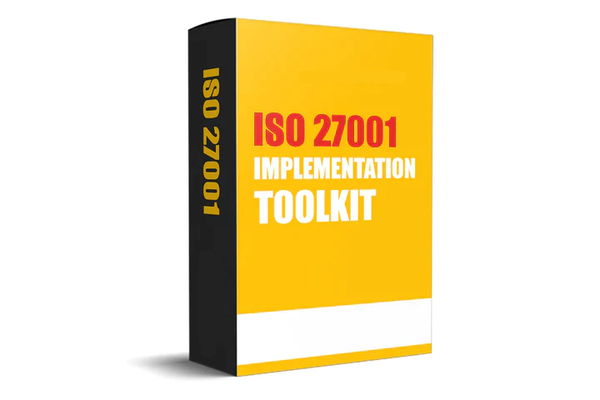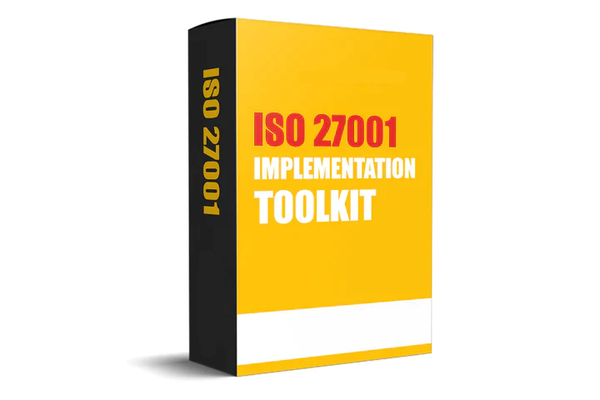How To Do Risk Assessment ISO 27001
Risk assessment is a critical component of ISO 27001, an internationally recognized standard for information security management systems (ISMS). ISO 27001 helps organizations safeguard their sensitive information, and risk assessment is at its core. It is the process of identifying, analyzing, and evaluating potential risks to an organization's information assets.This assessment allows businesses to make informed decisions about risk mitigation and security measures, ultimately ensuring the confidentiality, integrity, and availability of their data. In this brief overview, we will explore the fundamental principles and steps involved in conducting a risk assessment according to ISO 27001.

Understanding the Importance of Risk Assessment
Its significance lies in its ability to proactively identify potential hazards, vulnerabilities, and uncertainties that can impact an organization or project. By assessing risks, one can prioritize mitigation strategies, allocate resources effectively, and make informed decisions to protect assets and achieve objectives.Without a structured risk assessment process, organizations and projects are left vulnerable to unforeseen issues, which can result in financial losses, operational disruptions, and reputational damage. Therefore, understanding the significance of risk assessment is crucial for achieving resilience, compliance, and success in a rapidly changing and complex world."
Key Steps in Conducting a Risk Assessment
- Establish the Context: Begin by defining the scope and objectives of the risk assessment. Identify the assets, processes, and systems that need protection and consider relevant legal and regulatory requirements.
- Identify Risks: Systematically identify potential risks by examining internal and external factors. This involves assessing threats, vulnerabilities, and the likelihood of incidents that could impact your organization.
- Risk Evaluation: Evaluate the significance of each risk by comparing the results of the risk analysis to predefined risk criteria.
- Risk Treatment: Develop and implement strategies to manage and mitigate identified risks. Options include risk avoidance, risk reduction, risk transfer, or risk acceptance, depending on the specific situation.
- Monitoring and Review: Continuously monitor and review the risk assessment to ensure it remains up to date and effective. Risks and their associated controls may change over time, so periodic evaluations are crucial.
- Documentation and Reporting: Maintain thorough documentation of the entire risk assessment process. This includes recording risk assessments, risk treatment plans, and any changes made to mitigate risks. Additionally, report findings and progress to relevant stakeholders.
- Communication and Training: Ensure that all stakeholders are aware of the identified risks and the measures in place to manage them. Regularly communicate the risk assessment outcomes and provide training where necessary.
- Review and Improvement: Periodically review and improve your risk assessment process. Feedback and lessons learned can lead to enhancements and better risk management practices.
- Integration with ISO 27001: If your risk assessment is part of an ISO 27001 ISMS, integrate these findings into your overall information security management system. Ensure alignment with ISO 27001 requirements for comprehensive information security.
Tips for a Successful Risk Assessment
- Clearly Define Objectives: Begin by establishing clear objectives for your risk assessment. What are you trying to achieve, and what assets or processes are you assessing?
- Involve Relevant Stakeholders: Collaborate with all relevant stakeholders, including employees, management, and subject matter experts. Their input is invaluable for identifying and understanding risks.
- Use a Structured Methodology: Adopt a well-structured methodology for your risk assessment, such as ISO 31000 or NIST SP 800-30. These frameworks provide a systematic approach to risk management.
- Gather Comprehensive Data: Ensure that you have access to accurate and up-to-date data on your assets, threats, vulnerabilities, and historical incidents. The quality of your data directly impacts the accuracy of your risk assessment.
- Thoroughly Identify Risks: Leave no stone unturned when identifying risks. Consider a wide range of potential threats, including physical, technological, human, and environmental factors.
- Assess Impact and Likelihood: Use objective criteria to assess the potential impact and likelihood of each identified risk.
- Consider Risk Interdependencies: Understand that risks are often interrelated. One risk may trigger or exacerbate another. Consider these interdependencies in your assessment.
- Engage in Scenario Analysis: Scenario analysis can help you understand how multiple risks can interact and compound. This approach provides a more comprehensive view of risk.
- Document Everything: Maintain detailed records of your risk assessment, including data sources, methodologies, assumptions, and findings. Comprehensive documentation is essential for transparency and future reference.
- Regularly Update and Review: Risks change over time. Regularly update and review your risk assessment to ensure it remains relevant. New threats emerge, and existing risks may evolve.
Conclusion
In conclusion, a successful risk assessment is a vital component of effective risk management in any organization. To ensure its success, it is essential to follow a structured approach, involving all relevant stakeholders and using a comprehensive methodology. Clear objectives, thorough data collection, and ongoing review are crucial for accuracy and relevance. Remember to document the entire process, communicate findings effectively, and tailor risk treatment plans to individual risks.





